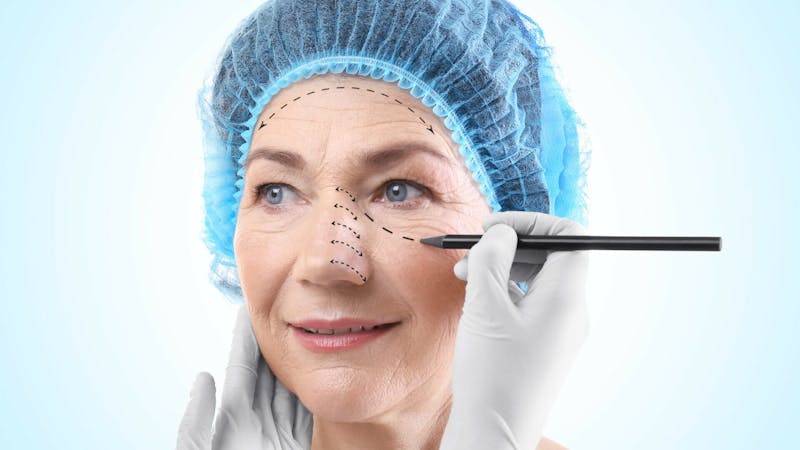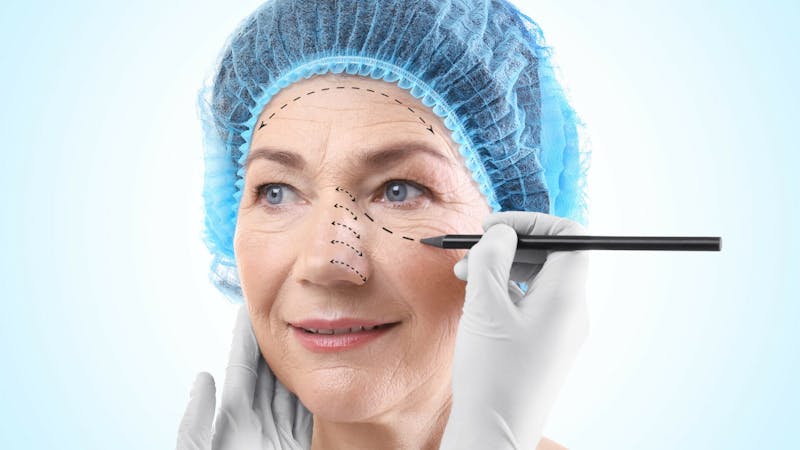The nose plays a critical role in our respiratory system, serving as the primary passage for airflow into the lungs. It filters, warms, and humidifies the air we breathe, contributing to overall respiratory health. However, when structural issues or abnormalities affect the nasal passages, they can lead to breathing difficulties. Common causes of breathing problems include a deviated septum, nasal polyps, or enlarged turbinates. These conditions can obstruct airflow, making it harder to breathe through the nose. For individuals suffering from chronic nasal congestion or difficulty breathing, rhinoplasty(تجميل الأنف) can be an effective solution to improve both the form and function of the nose.

The Role of Rhinoplasty in Correcting Breathing Issues
Rhinoplasty, traditionally viewed as a cosmetic procedure, can also address functional concerns related to nasal airflow. When structural issues within the nose cause breathing problems, surgeons can perform functional rhinoplasty to correct these issues and improve airflow. A deviated septum, where the wall dividing the two nostrils is crooked or off-center, is one of the most common reasons for obstructed breathing. Rhinoplasty can straighten the septum, allowing air to pass more freely through the nasal passages. In some cases, the surgery may also involve removing or reducing the size of obstructive structures such as enlarged turbinates or nasal polyps, further improving airflow and enhancing breathing efficiency.
Addressing a Deviated Septum with Rhinoplasty
One of the most common reasons for poor airflow through the nose is a deviated septum, which can make one side of the nasal passage smaller than the other. This misalignment can cause congestion, difficulty breathing, and frequent sinus infections. Functional rhinoplasty can correct a deviated septum by straightening the septum and improving airflow. This type of rhinoplasty is often performed in conjunction with cosmetic rhinoplasty, especially when individuals want to address both aesthetic and functional concerns at the same time. By correcting the structural problem, patients often experience significant improvements in their ability to breathe, along with a more symmetrical and balanced nasal appearance.
Turbinate Reduction to Improve Airflow
The turbinates are structures inside the nasal passages that help filter and humidify the air we breathe. However, when these structures become enlarged, they can block airflow and contribute to breathing difficulties. This condition, known as turbinate hypertrophy, is common in individuals who suffer from chronic nasal congestion. During rhinoplasty, surgeons can reduce the size of the turbinates to improve airflow and alleviate symptoms like nasal obstruction and difficulty breathing. In some cases, turbinate reduction may be the sole focus of the surgery, while in others, it may be performed alongside other structural corrections to achieve optimal results.
Functional and Aesthetic Benefits Combined
Many individuals who seek rhinoplasty to improve breathing are also concerned with the appearance of their nose. A functional rhinoplasty can correct structural issues, such as a crooked or oversized nose, while also enhancing the aesthetics of the face. This combination of functional and cosmetic benefits makes rhinoplasty a popular choice for people who want to address both form and function. For example, correcting a deviated septum not only improves breathing but can also result in a more balanced and proportionate appearance. As a result, patients often experience improved self-esteem and confidence alongside the physical benefits of better airflow.
The Recovery Process After Rhinoplasty for Breathing Issues
After rhinoplasty(تجميل الأنف), patients typically experience some swelling, bruising, and discomfort, especially if the procedure involved significant structural changes. The recovery process for functional rhinoplasty is similar to cosmetic rhinoplasty, although the functional improvements in breathing may become noticeable sooner. Within the first few weeks, most patients notice a significant reduction in nasal congestion, improved airflow, and the ability to breathe more easily through the nose. However, full recovery can take several months, as the nose continues to heal and settle into its final shape. During the recovery period, it’s important to follow post-operative care instructions carefully, including avoiding strenuous activities and refraining from touching or applying pressure to the nose.
Conclusion
Rhinoplasty for breathing issues offers a dual benefit of improving both the function and appearance of the nose. Whether the procedure is focused on correcting a deviated septum, reducing enlarged turbinates, or addressing other structural problems, rhinoplasty can significantly improve airflow and alleviate symptoms of nasal obstruction. For many patients, the improvements in breathing are immediately noticeable, with long-term benefits for respiratory health and overall quality of life. Combined with potential aesthetic enhancements, functional rhinoplasty can be a transformative solution for those seeking both a more aesthetically pleasing nose and improved nasal function.

